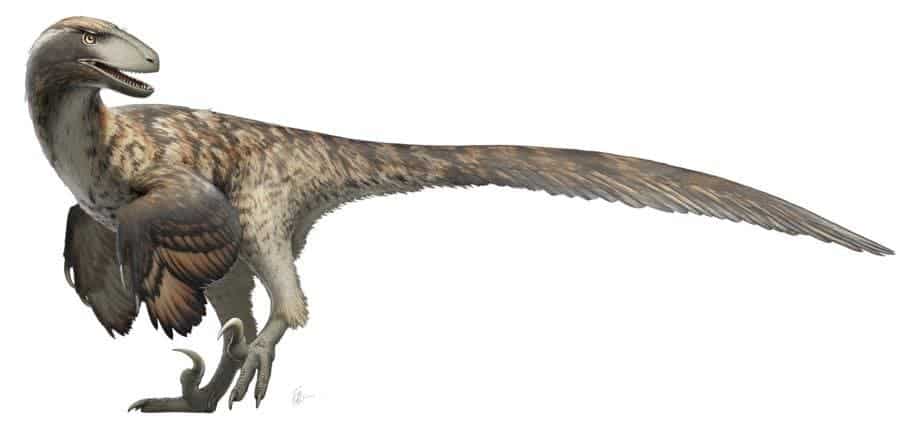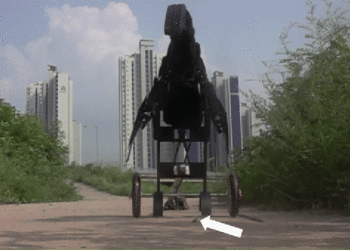Velociraptors likely didn’t hunt in packs, at least judging from their teeth.

A new study from the University of Wisconsin Oshkosh looked at the chemical makeup of velociraptor teeth fossilized from specimens throughout their lives. The team reports that their findings suggest it’s unlikely that these lithe predators hunted in large coordinated packs as wolves would, which would mean that Jurassic Park got their behavior wrong.
Not big on teamplay
“Raptorial dinosaurs often are shown as hunting in packs similar to wolves,” said Joseph Frederickson, a vertebrate paleontologist and director of the Weis Earth Science Museum on the UWO Fox Cities campus.
“The evidence for this behavior, however, is not altogether convincing. Since we can’t watch these dinosaurs hunt in person, we must use indirect methods to determine their behavior in life.”
Jurassic Park features raptors (Deinonychus antirrhopus) hunting in packs to bring down large prey. And while they were undoubtedly fearsome beasts in real life, with their sickle-like talons and scary fangs, they probably didn’t hunt in packs.
The team explains that neither birds nor crocodilians, which are the closest living relatives of dinosaurs, hunt in groups, and they only rarely hunt prey larger than themselves. Since behavior can’t fossilize, they add, we have to rely on such circumstantial evidence to deduce their hunting patterns.
Another piece of evidence comes from a chemical isotope analysis the team performed on teeth recovered from raptor fossils of different ages. The idea was based on observations of Komodo dragons, a species in which infants may well be attacked and consumed by adults, so they take refuge in trees. They thus gain access to food resources that (the larger) adults don’t have, and this leaves a mark in the balance of carbon isotopes in their tissues — in this case, their infant teeth.
Animals that hunt in packs wouldn’t show any changes in their carbon isotope balances, as they would maintain the same diet throughout their lives since the pack helps feed everybody, regardless of age, from the same kills.
“We proposed in this study that there is a correlation between pack hunting and the diet of animals as they grow,” Frederickson said.
“If we can look at the diet of young raptors versus old raptors, we can come up with a hypothesis for whether they hunted in groups.”
Their analysis focused on fossilized Deinonychus teeth. This raptor species was native to North America during the Cretaceous Period about 115 to 108 million years ago. They analyzed levels of carbon and oxygen isotopes inside the teeth to get an idea of what they ate and drank. The data was compared to similar readings from a crocodilian and some herbivorous dinosaur fossils recovered in the same geologic formation.
The teeth point to a transition in the raptors’ diet as they aged, as the team found differences in the isotope values between the smallest and largest teeth.
“This is what we would expect for an animal where the parents do not provide food for their young,” Frederickson said. “We also see the same pattern in the raptors, where the smallest teeth and the large teeth do not have the same average carbon isotope values, indicating they were eating different foods.”
“This means the young were not being fed by the adults, which is why we believe Jurassic Park was wrong about raptor behavior.”
While the current research focused on raptors, the technique could be used to investigate the hunting and feeding patterns of other extinct species as well, the team concludes.
The paper “Ontogenetic dietary shifts in Deinonychus antirrhopus (Theropoda; Dromaeosauridae): Insights into the ecology and social behavior of raptorial dinosaurs through stable isotope analysis” has been published in the journal Palaeogeography, Palaeoclimatology, Palaeoecology.






